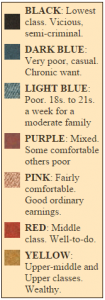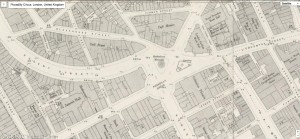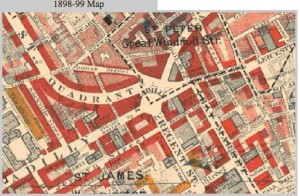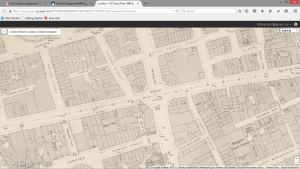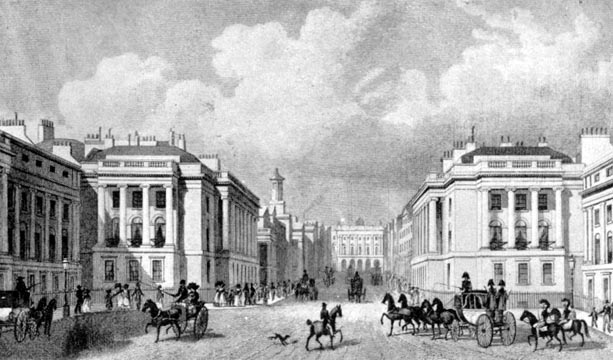One of London’s lovely roundabouts, Piccadilly Circus connects an array of different streets together, including one of more famous streets–Regent Street. Yet, after coming up Piccadilly street, the circle homes many of London’s middle class as well as visitors from all around the city thanks to the omnibus chartering people around from place to place. As illustrated in In Dull Brown by Evelyn Sharp, the contrast in clothing displayed on the omnibus that Jean and Tom road around London “‘That comes of the simple russet gown,’ she thought ; ‘of
course he thinks I am a little shop-girl'” becomes a symbol of the middle class making up the Circus (182). The brown gown that Jean wears is one associated with the working class rather than the “monotony of black coats and umbrellas” of the upper class London citizens (185). The omnibus allows a mixing of classes where the rich and the less-than-rich ride around London with ease in order to get from place to place; converging rather than segregating the class systems. To further explore the class surrounding the massive circle, “Charles Booth Online Archive” provides maps with the layout of the impoverished.
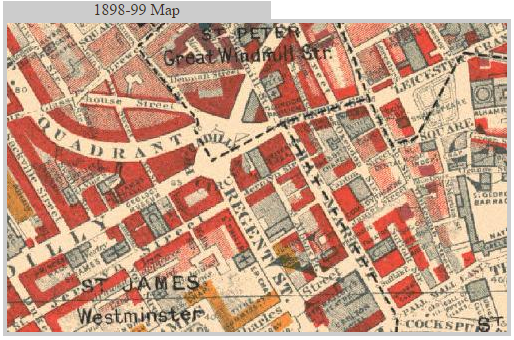
As shown by the picture above, the red surrounding Piccadilly street and the Circus were well-off, middle class ladies and gents.
Upon further inspection of the Circus area of London, deep in “the Proceedings of the Old Bailey” records online, many crimes of theft had been recorded during London’s history. According to various court recordings from various different men of working class vocation (typically carpenters, shoe makers, guilder, barmen, etc), many accounts of larceny and pick-pocketing had occurred within the Piccadilly area of Victorian London. From one of the pick-pocket accounts on the Bailey’s website archives, the defendant went on to elaborate about the crime: “I felt a pull at my pocket; I turned and saw the prisoner drop my handkerchief; I laid hold of him,” and in turn the thief, a man of 18, pleaded guilty and had served fourteen years (Old Bailey). An astoundingly lengthy amount of time to serve for a handkerchief of only 5 shillings. Then again, better than losing one’s hands for pleading guilty to theft. The concentration of crime in the Circus, and even the pick-pocketing of cloth could have to do more-so with the sanitation problem striking London during this time. Thanks to the incorporation of omnibuses, the amount of pollution in the air and sickness running rapid could cause the need to steal personal items or money from those within the large area. That, or poverty from the surrounding streets brought out the need to reach into pockets of the rich despite the harsh, long sentences stapled to those found guilty.
Works Cited:
“The Proceedings of the Old Bailey.” Results. N.p., n.d. Web. 09 Sept. 2015
“The Charles Booth Online Archive.” Results. N.p., n.d. Web. 09 Sept. 2015
“In Dull Brown.” The Yellow Nineties Online – Search the Archive. N.p., n.d. Web. 09 Sept. 2015.


